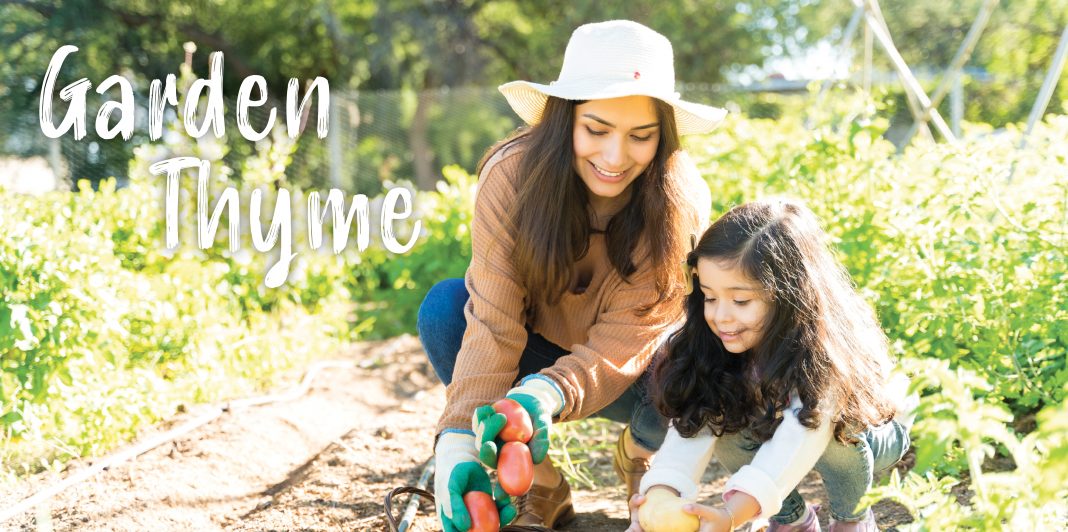9 Creative Ideas for DIY Plant Markers
Plant markers are essential in almost any garden. Whether you’re a seasoned gardener or a newbie, marking your plants in the spring can be extremely helpful and makes your garden more organized.
Pant markers are particularly useful when planting bulbs, sowing seeds, and indicating the location of perennials so each freshly sprouting plant can be accurately identified. They can also come in handy when distinguishing between your cultivated plants and weed intruders, when practicing yearly crop rotations, and can help indicate which plants you want to let completely flower for seed harvesting.
Not only are plant markers handy for your own observations, but they are also ideal when others are involved in your garden. Whether your garden is shared as part of a community garden, you have family members or others helping with garden chores, or you simply like to showcase your garden to visitors, these markers help others clearly identify which crops are growing and where.
You can purchase high-quality and elaborate markers to accompany your more ornamental garden art plants. However, most markers can be simple, functional, and easily (and inexpensively!) made from scratch from repurposed and upcycled everyday items. Making your own plant markers can also be a fun activity to do with your kids to help them get interested in gardening as a hobby!
Here are just a few of our favorite easy DIY plant markers you can make from everyday items in your home.
1. Hand-painted rocks
When it comes to DIY plant markers, it doesn’t get much easier (or cheaper!) than painting a rock. Not only are rocks easy to find and free, but their natural element will suit your garden nicely. Paint the name of the plant simply, or add pops of color with an artistic rendering of the plant as well to add a little charm to your garden.
Painting rocks to use as plant markers is not only efficient and artistic, but these are one of the best plant marker crafts to do with your kids. Let them express their artistry for a specific plant, and bonus points if you let them tend to their plant themselves! This can be an opportunity for not only a fun craft but a learning experience as well.
2. Broken terracotta/clay pot pieces
Terracotta or clay pots are excellent potting materials for potted plants. However, they are extremely fragile, and you’re bound to break a few. But don’t let that pot go to waste! Broken pieces of terracotta/clay pots make excellent plant markers.
Already weatherproof and matching the garden aesthetic, this can be a natural and attractive addition to your garden. A broken shard of a clay pot usually has a sharp end to easily stick into the ground, and enough space above to indicate the plant names with a permanent marker, paint, or weatherproof vinyl stickers.
3. Wine corks
If you love wine, you’ll also love this idea for DIY plant markers. If you regularly sip some wine while lovingly watching the sunset over your garden in the evenings, save those corks! Wine corks are another natural material that works well as a plant marker. Small and unobtrusive, a wine cork as a plant maker adds a little wine enthusiast’s charm to your garden.
4. Laminated printed labels
Not all that great at arts and crafts? Not to worry! You can still make cute plant markers without exposing your poor penmanship or inability to draw a carrot. In this case, an easy (and super cute!) option is to print out your plant marker using pre-made text and graphics. Then, simply laminate them to weather-proof them, stick them into the ground using a clothespin, and voila! Your plant marker is ready to go.
5. Clothespins
Speaking of clothespins, these can be a simplified item to use as plant markers, too! Simply ditch the printing and laminating and write the name of the plant in permanent marker or paint directly onto the clothespin, stick it into the ground, and there you go! Your plant is marked.
6. Plastic utensils
Plastic utensils are not just a warm-weather go-to for picnics, but for plant markers as well! Maybe you use a high ratio of forks and spoons in your picnic get-togethers and therefore have a surplus of knives (or whatever ratio you use most, you usually have one utensil leftover more than others). Repurpose these surplus utensils that go unused as simple and easy-to-spot plant markers using any method you like to add the plant name.
7. Seashells
If you’re like many people, you likely have a collection of seashells from past vacations, and you have no idea what to do with them. If this is you, turn them into super-cute little plant markers! Seashell plant markers give your garden a subtle beachy theme, and are a great way to put that collection taking up space in a jar or your drawer to good use!
8. Bricks
If you’ve been working on a construction or landscaping project for your home, you likely have a few bricks lying around that just get in the way. Instead of throwing them out, turn them into plant markers! Bricks provide just enough surface area to act as a small canvas to paint something really creative to identify your plants, but they are not so big as to be obtrusive. Let your creative juices flow with this DIY plant marker idea.
9. Popsicle sticks
For many families and their kids, the return of warm weather means one thing: POPSICLES! If you’re a summer-popsicle-treat-loving family, probably the absolute easiest way to make plant markers is with leftover popsicle sticks. After simply writing the plant names with a permanent marker, popsicle sticks make neat and tidy-looking plant markers that are simple yet effective. Also, YUM!















